Are you looking to expand your perennial gardens with fresh new plants for the summer? Look no further! In the spirit of June being National Perennial Month, we’ve curated a list of our favorite perennials to give your garden beautiful color and summer interest.
Coreopsis ‘moonbeam’
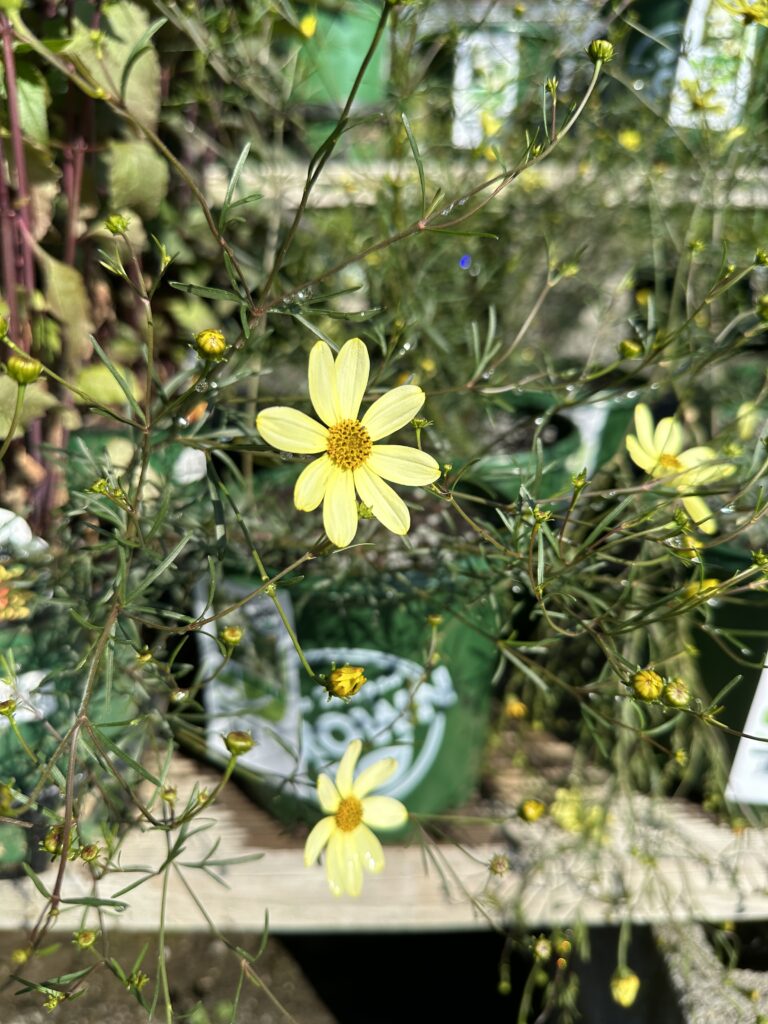
Coreopsis are lacy, airy flowers that rebloom with ease in the summer heat! ‘Moonbeam’ features soft yellow blooms that are in color from late spring/early summer all the way through mid-fall! Keep them dry and hot for best results.
Geranium ‘Rozanne’
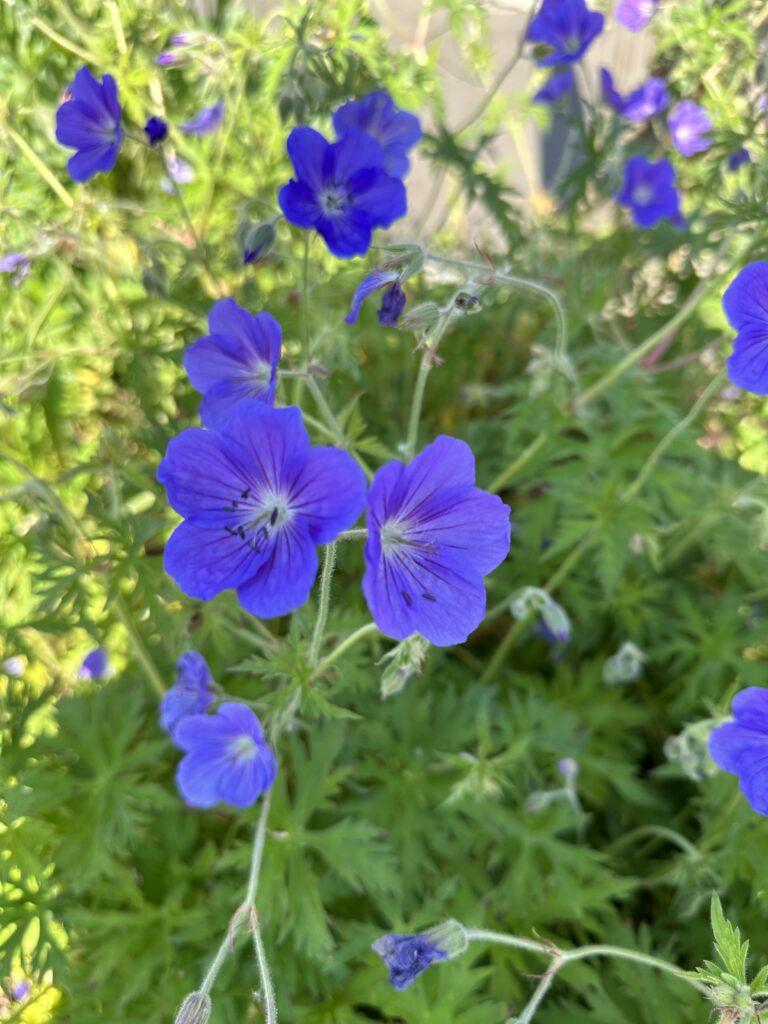
An excellent long-blooming option to get sought-after blue flowers in your garden! This stunning plant will give you color from early summer through fall. It is also a great pollinator plant while resistant to common pests and diseases.
Shasta Daisy
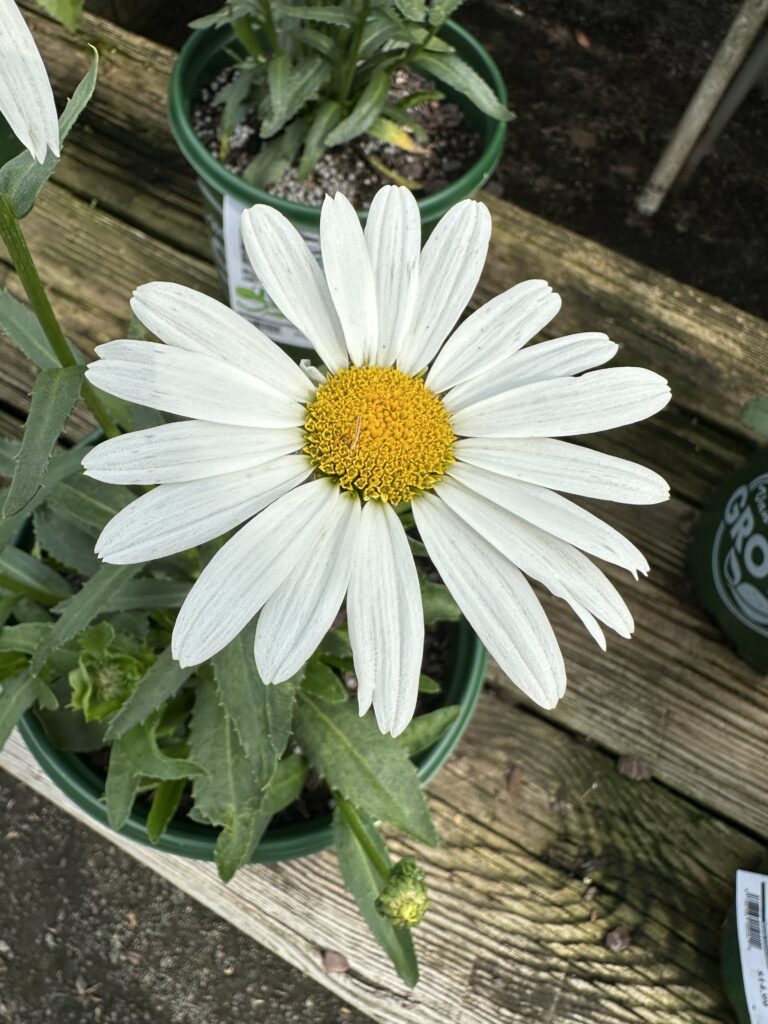
Shasta Daisies are a staple in the garden. These cheery white to pale yellow flowers typically bloom during the summer, but the exact time frame depends on the variety. Great for pollinators and cut flowers!
Digitalis ‘Arctic Fox Rose’
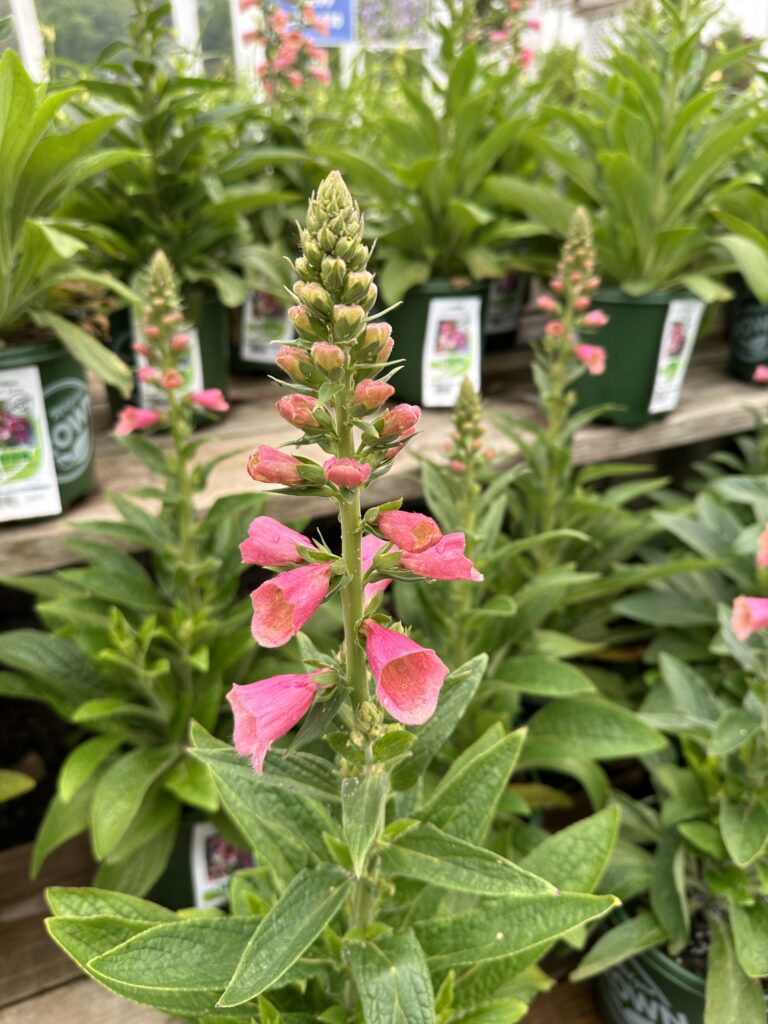
A true perennial foxglove! ‘Arctic Fox Rose’ blooms from late spring through summer and is an excellent option for attracting hummingbirds.
Lamium ‘Purple Dragon’
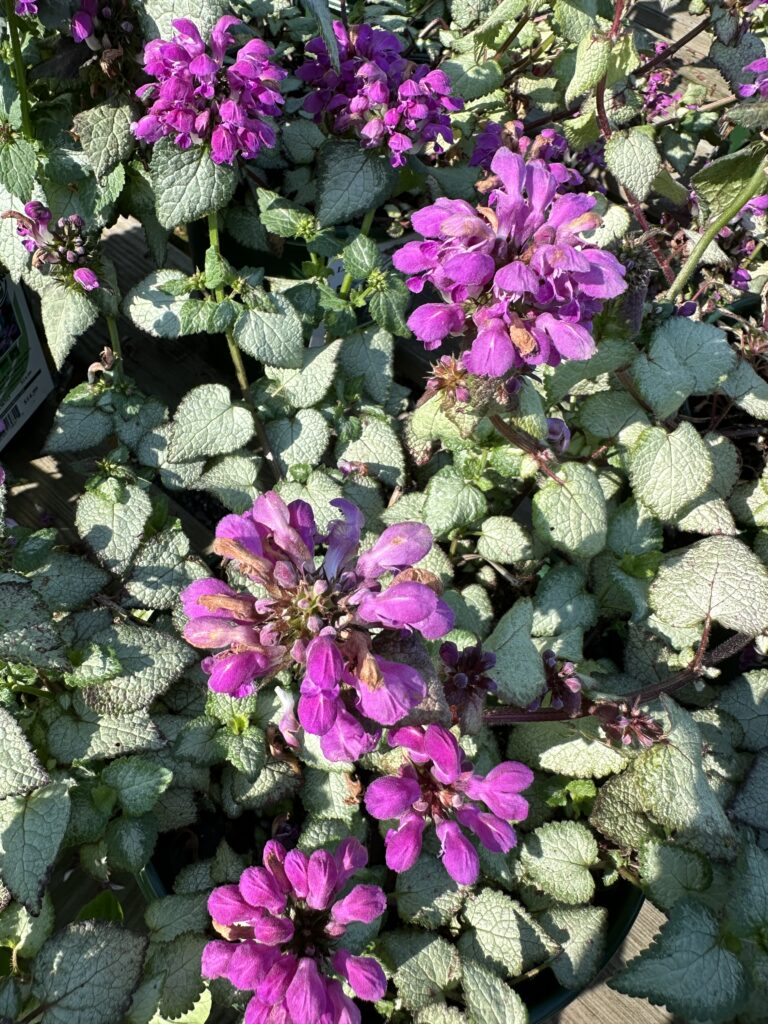
Lamium is the perfect plant if you’re looking for a long-blooming, groundcover option for part to full shade. ‘Purple Dragon’ shows off its magenta-purple flowers from late spring to fall and is also bee-friendly!
Fall is here which means cool weather and frosty mornings are headed our way. Unfortunately for your plants, there’s no heater or jacket that can help keep them warm, and as a result, some of your plants will begin to look a little sad once temperatures start to drop. If you’re like many gardeners, that means it’s time to hack everything back! Well…maybe not. If you have any of these plants listed below, you’ll want to avoid cutting them to the ground later this fall, or in some cases, cutting them back at all.
- Azaleas: prune these once they’re past flower, but before the fourth of July.
- Rose of Sharon: likes to be left alone for the coming winter and instead cleaned up in the early spring.
- Lavender: Wait until March! Cut out any dead wood at the end of winter to ensure the best new flush for your lavender plants.
- Montauk Daisy: (Nipponanthemum) Cut this woody perennial back to six inches from the ground this fall, rather than all the way to the ground.
- Russian Sage: (Perovskia) If the shape or health of the plant has been compromised, cut it back aggressively this fall, to roughly six inches. If not, leave it alone until early to mid-spring, removing any dead wood and cutting back to where you see new growth emerging. Remember, it’s a late-breaking plant, so give your sage a little extra time to start growing.
- Rhododendron: like azaleas, rhododendrons can be pruned once they’re past flower, but before the fourth of July.
- Roses: like to be left alone for the coming winter, and instead cleaned up in the early spring.
- Geum: Remove any damaged or dead foliage now, but leave the majority of the plant for the winter. You can repeat this process again in April, removing any leaves with winter injury, and even divide it around April or early May, every three to four years, but if you need to cut it all the way back, wait until after it’s past flower.
- Perennial Hibiscus: cut this plant back to about six inches from the ground this fall… not because it will grow from the stump, but rather to keep a marker for you to remember you have this plant. Perennial hibiscus won’t be back in your garden until at least June!
- Summer and Fall blooming Clematis: Wait until spring to clean up any dead wood on these plants, once you start seeing a little new growth.
- Ornamental Grasses: Keep these around all winter to protect the base of the plant, where the new growth will emerge in spring. Don’t cut them back until March at the earliest, or April at the latest.
- Panicled Hydrangeas: like to be left alone for the coming winter, and cleaned up in the early spring.
- Lilacs: prune after they’re past flower, but before the fourth of July.
- Evergreens: can be pruned in mid-spring after the plants have begun to flush lush new growth.
Show your patriotic colors this year with a fun red, white and blue themed garden or planter. This color combination looks stunning in any sized yard, and with so many different plant options, you’re sure to have a unique space that pops! Below are just a few of our favorite plants in this popular color scheme.
Red Plants
Perennials
Red Fox Veronica

James Kelway Tanacetum

Crocosmia Lucifer

Trees & Shrubs
Mountain Laurel

Skookum Rhododendron

Wilgen’s Ruby Rhododendron

Tuff Stuff Red Hydrangea

Ruby Slippers Hydrangea

Miss Ruby Butterfly Bush

White Plants
Perennials
Gaura

Snow Hill Salvia

Peacock White Phlox

Trees & Shrubs
Hydrangea Little Quickfire

Hydrangea Incrediball

Rhododendron Cunningham White

Avalanche Andromeda

White Flowering Dogwood

Fothergilla

Blue Plants
Perennials
Veronica Venice Blue

Myosotis “Forget me not”

Blue Cross Gentiana

Trees & Shrubs
Buddleia Pugster Blue

Hydrangea Endless Summer

Fothergilla Blue Shadow

Viburnum Blue Muffin

Hydrangea Tiny Tuff Stuff

Blue Mist Shrub

Creeping phlox is a great rock garden plant and a great ground cover. It’s a native plant that is deer-resistant and required part to full sun.
At Van Wilgen’s, we carry four colors: white, purple, pink, and blue. What I love about this plant is how easy it is to grow. Just use a topsoil peat moss compost mix when planting it.
It’s a low-maintenance plant that can cover difficult areas of your landscape that also livens up a walkway or flowerbed edge. It’s a great early season pollinator plant as the bees are first waking up – its blooming serves as a wonderful early season nectar source.
Creeping phlox is good for erosion control and you can dig it up and split it every few years. There is no need to deadhead the flowers and as they go by you’ll have a nice, green mat for the fall.
Fertilize it in the spring and fall and you’ll have beautiful creeping phlox blooming again the following year.
Fertilize in spring and fall to have a great year the following year, plant tone.
As summer comes to an end, rustic autumn colors sweep in as the season’s vibrant blooms begin to fade. Keep your garden looking fresh this year with some fall flowering plants in your space! Utilize plants with late bloom times and apply Bloom Booster to ensure your flowers are reaching their maximum potential.
Here Are Our Top Flowering Plants That’ll Put on a Fall Show
Garden Mums
The color variety available for garden mums makes this one of our favorites for fall flowers. Mums can come in autumn hues of orange, gold, russet, and bronze which will keep your garden looking great all season long. Perennial Mums will last through the winter and will bloom again next year. Plant in full sun. Grows 18 inches tall.
Celosia
Celosia brings incredible color and vibrancy to your garden. They offer flowers in different shapes and colors from the brain like cockscomb to the showy plume varieties that produce feathery flowers that look like flames or puffs of cotton candy. They bloom until the first frost. Plant in full sun. Grows up to 3 feet tall.
Aster
Daisy-like blossoms, with a resemblance to a star, will give your garden a fresh new shade of color. Blossoms in pinks, purples, blues, and whites emerge in late August to extend the beauty. Plant in full sun. Grows 5 inches tall.
Pansies
These rounded, flat-faced flowers bring a variety of bright colors, and some autumn colors, to balance out your garden. Pansies are versatile and can be planted in your garden, a container, or planting beds. They bounce back after a bit of light frost, which does well in an autumn garden. Plant in partial to full sun. Grows 6-12 inches tall.
Montauk Daisies
This fall long-blooming daisy stands up to salt spray, heat, and tight planting conditions in a cottage garden setting. Grows about 3 feet tall.
Veronica
Gorgeous spikes of blue or purple color. Features large, flowers that can last into the fall. Benefits from a good hard trim after flowers are finished, in order to maintain a nice tight habit.
- Perennial Hibiscus – Show-stopping dinner plate-sized blooms in red, pink, white, including varieties that mix each color on every flower. Create your own backyard tropical paradise!
- Coneflowers – This is THE classic native flower. It comes in lots of colors including in pink, neon pink, yellow, red, white, and even orange. Plus, it blooms on repeat.
- Lavender – This is a super fragrant choice for that sunny, sandy, summer beach scene with lots of long-lasting flowers.
- Coreopsis – A lacy, airy flower that reblooms with ease in the heat of summer. Keep them dry and hot for best results.
- Daylily – This indestructible rebloomer does best along roadsides, walkways, and sunny hot locales everywhere.
- False Sunflower – You can get tons of long-lasting color from this tall, narrow plant that loves to bake in the afternoon sun.
- Black-eyed Susan – These bright yellow flowers bridge the gap between summer vacation and football season. Bring the summer to a close and ring in autumn all in one great plant.
Fourth of July is often used as a marker for pruning some shrubs, perennials, and annuals. Knowing when to prune is an important step in keeping your plants healthy and thriving. Now is the perfect time to prune the following :
Evergreen trees and shrubs
Rhododendron
Azalea
Weigela
Viburnum
Forsythia
Lilacs
Spiraea
Andromeda
Privet
Mock orange
Salvia
Veronica (halfway)
Nepeta
Bleeding Heart
Dianthus
Spring flowering bulbs such as daffodils
Montauk Daisy (halfway)
Painted Daisy

The perennial department at Van Wilgen’s lives at an interesting crossroads. We watch as the nursery yard fills up with evergreen interest, and the Greenhouse loads up on pansies, and we poke and prod our plants, waiting for the day that they too might be in bloom. Then the evergreen gives way to the spring bloomers, and the greenhouse starts whispering about veggies and herbs, and perennials…. While, we proudly display four or five perennial plants that bloom early (here’s to you, hellebores, and columbine) and continue to wait. Until now.
The perennial season is finally in full swing, and our humble department is about to go off like the fourth of July. From catmint and salvia in full bloom to coneflowers, yarrow and coreopsis just about to break open, all our favorite plants are finally arriving on the scene. Red Hot Poker? Budded. Delphinium and Heliopsis? Buds and blooms! Bellflower and Iris and Bee Balm, oh my! It’s June- the best time of year to be a perennial gardener. Come enjoy it with us.
Here are a few of Trevor’s favorite’s that look fantastic right now!
Echinacea Lemon Yellow– Sunny, lemon yellow blooms sure to brighten a summer border! A must-have for a cutting garden, this drought-tolerant perennial was bred for cold hardiness and compact form with prolific flowering over an exceptionally long season.
Gaillardia Spin Top Yellow Touch-Each plant is bathed in big, flat, solid, medium red daisies with just a touch of yellow at the tips of each petal that blooms from late May through early July.
Geranium – Johnsons’s Blue-Large, blue-violet flowers appear continuously from spring to fall above finely cut, divided leaves. Use in borders, rock gardens, and containers.
Perovskia- Crazy Blue-A compact and colorful, easy-care perennial for use as an accent, border, or mass planting. Violet-blue flower spikes arise from the lacy, gray-green aromatic foliage, adding an airy feel to the landscape. Hardy and heat tolerant, and sturdy, interlacing branches do not fall open in wind and rain. Deer and rabbit-resistant.
Delphinium – Blue Butterfly -This little beauty stands at a height of 14″ and forms compact mounds of well-branched foliage. It puts on a spectacular show from early summer to fall, with 1.5″, deep blue flowers that cover the lacy leaves. Though it is short-lived, it is worth using as edging, a bedding plant, or in containers combined with brightly colored annuals.
Will O’Hara
Perennial Manager
